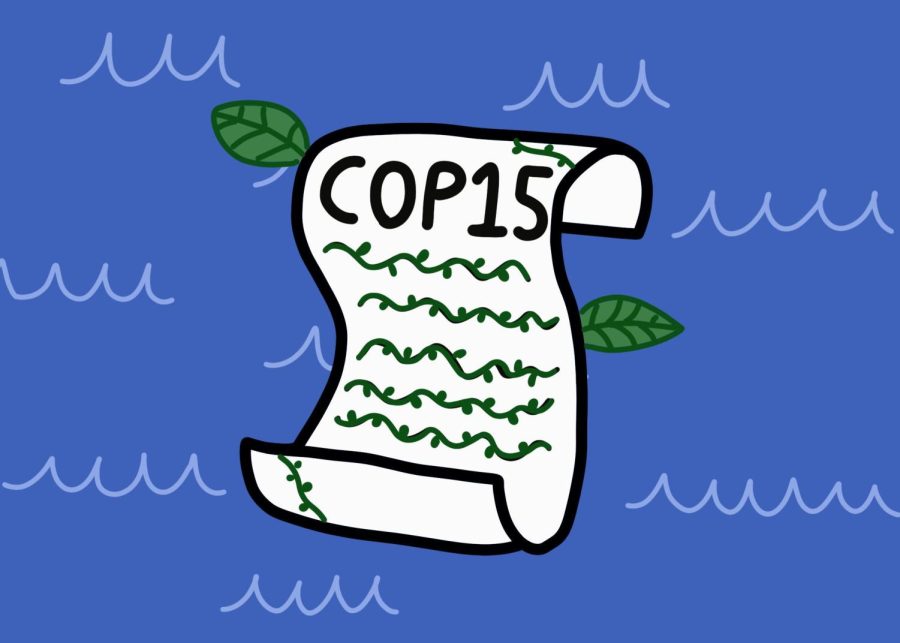COP15 establishes critical goals to meet 2030 deadlines
COP15 established new short-term goals to help limit global warming to 1.5 degrees by 2030.
January 14, 2023
Almost 200 nations from across the world were represented in December for the United Nations Convention on Biological Diversity’s (CBD) 15th Conference of the Parties (COP 15) in Montreal, Canada. This conference was set to establish new goals for short-term global climate action through 2030 in alignment with the Sustainable Development Goals in order to limit global warming to 1.5 degrees. A key factor in meeting this goal is nature and natural biodiversity. These COP meetings have an incredible effect on the future of our planet, and they are something that should be paid attention more to.
Biodiversity is essential for the support of all life. Ecosystems cannot be relied on without a wide variety of organisms. They provide us with the air we breathe and the food we eat. Beyond this, nature and its complex ecosystems are something for us to learn from. They can help us understand how life functions and the role of each species in sustaining ecosystems.
This is the 15th meeting of the Biodiversity COP. Originally founded in 1993, the convention was started with the goal; “conserving and sustainably using biodiversity, for the benefit of all people and the planet.” Every year reaching this goal becomes more important as we approach points of no return with species loss, pollution and global warming.
The biodiversity conference covers all forms of life, “from microscopic viruses to enormous whales, as well as conservation, knowledge-sharing and financial policies associated with these organisms, their protection and their use,” according to The Natural History Museum.
At the conference, world leaders made massive strides toward achieving this. They adopted the Kunming-Montreal Global Biodiversity Framework (GBF), agreeing to collectively complete three goals by 2030: protect 30% of Earth’s lands, oceans, coastal areas and inland waters, reduce by $500 billion annual harmful government subsidies and cut food waste in half. This is similar to the well-known Paris Agreement, which also came out of a COP, but is focused on biodiversity. Thanks to the adoption of this framework — we have a shot at reversing nature loss by 2030. The rights of indigenous peoples and their contributions as stewards of nature were recognized at the conference.
The Paris Agreement was established during COP 21. This conference and COP 15 are similar in their overarching goal, however different in the way in which they do so. COP 21 was focused on climate change and COP15 on biodiversity. The framework that comes out of these meetings, specifically the Paris Agreement, unites countries across the world to save our planet. The approval of the GBF is the crucial first step toward healing our broken relationship with nature. Unless we commit to the outlines of the GBF and reverse nature loss by the end of the decade, the consequential harm to our planet will only become greater and eventually, irreversible.
Included in the framework, the conference set 23 specific targets to complete by 2030. These targets address overexploitation, pollution, fragmentation and unsustainable agricultural practices in natural ecosystems. Some highlights of this include target nine, which will “ensure that the management and use of wild species are sustainable, thereby providing social, economic and environmental benefits for people” and target 12, which will “significantly increase the area and quality and connectivity of, access to, and benefits from green and blue spaces in urban and densely populated areas sustainably.”
One of the most significant ways to fight environmental harm is through government financing, which is a cornerstone of the GBF. Finance has ultimate control over many substantial decisions countries make toward meeting these goals. The alignment of financial flow towards sustainable investments and away from environmentally harmful ones can have a massive effect on the success and attainment of the 2030 goals.








